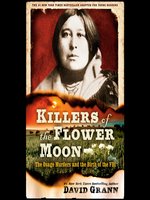מאת David Grann
In the 1920s, the richest people per capita in the world were members of the Osage Nation in Oklahoma. After oil was discovered beneath their land, the Osage rode in chauffeured automobiles, built mansions, and sent their children to study in Europe.
Then, one by one, the Osage began to be killed off.
As the death toll surpassed more than twenty-four Osage, the newly created F.B.I. took up the case, in what became one of the organization's first major homicide investigations. An undercover team, including one of the only Native American agents in the bureau, infiltrated the region, struggling to adopt the latest modern techniques of detection to bring an end to the deadly crime spree. Together with the Osage they began to expose one of the most chilling conspiracies in American history.
In this youngification of the adult bestseller, critically acclaimed author David Grann revisits the gripping investigation into the shocking crimes against the Osage people. It is a searing indictment of the callousness and prejudice toward Native Americans that allowed the murderers to continue for so long and provides essential information for young readers about a shameful period in U.S. history.
In the 1920s, the richest people per capita in the world were members of the Osage Nation in Oklahoma. After oil was discovered beneath their land, the Osage rode in chauffeured automobiles, built mansions, and sent their children to study in Europe.
Then, one by one, the Osage began to be killed off.
As the death toll surpassed more than twenty-four Osage, the newly created F.B.I. took up the case, in what became one of the organization's first major homicide investigations. An undercover team, including one of the only Native American agents in the bureau, infiltrated the region, struggling to adopt the latest modern techniques of detection to bring an end to the deadly crime spree. Together with the Osage they began to expose one of the most chilling conspiracies in American history.
In this youngification of the adult bestseller, critically acclaimed author David Grann revisits the gripping investigation into the shocking crimes against the Osage people. It is a searing indictment of the callousness and prejudice toward Native Americans that allowed the murderers to continue for so long and provides essential information for young readers about a shameful period in U.S. history.







